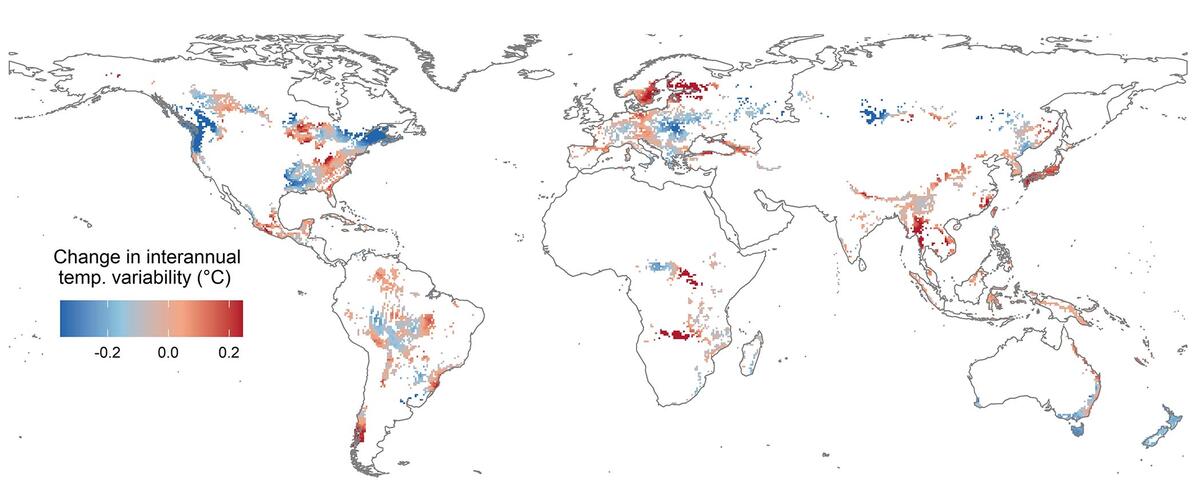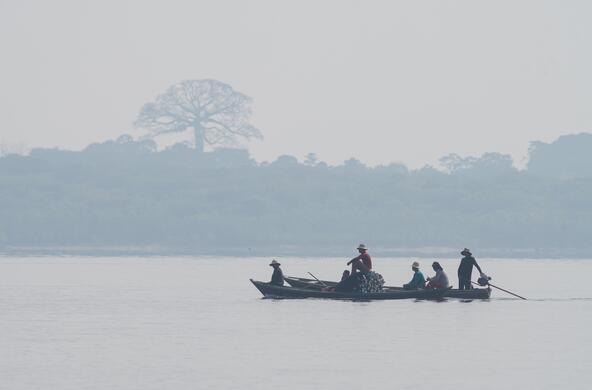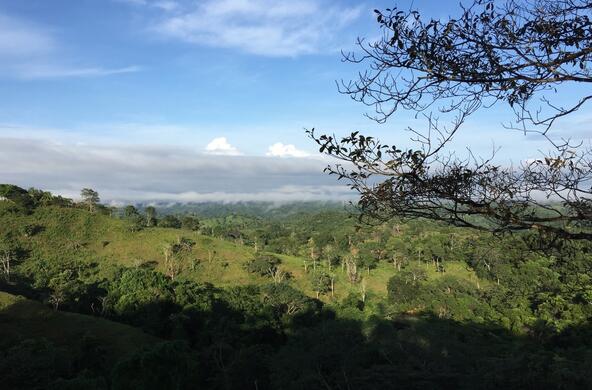A new study out today in the first issue of Environmental Research: Ecology, published by IOP Publishing, assessed effects of past and current climate variability on global forest productivity. The work highlights sensitive regions where forests may be most at risk as the planet warms and temperatures become more extreme. The framework can help set conservation priorities, support forest adaptation efforts, and improve carbon accounting.
Lead author Winslow Hansen, a forest ecologist at Cary Institute of Ecosystem Studies, says, “Global climate patterns are becoming increasingly variable. This means more extremes, which threaten forest health and productivity. They say adversity makes you stronger. Here, we were essentially testing that adage for trees. Are forested regions that experienced more variable conditions in the past better prepared to tolerate variable climate now and in the future?”
The team looked at global climate records for two 20-year study periods, 1950-1969 and 2000-2019, to identify regional trends in climate variability. Records included monthly mean, minimum, and maximum temperatures, total precipitation, and mean vapor pressure deficit (a measure of how dry the air is). Global data were gridded at a 0.5° spatial resolution.

To assess modern forest productivity, the researchers used global vegetation data detected by NASA’s MODIS satellites. The ‘enhanced vegetation index’ (EVI) is a satellite-derived measure of ‘greenness’ which is a reliable proxy for leaf cover and forest productivity. The MODIS satellites ‘Aqua’ and ‘Terra’ produce a global map of vegetation cover every eight days.
By pairing climate data with satellite records of forests, they were able to assess how climate variability in the past and present shapes current forest productivity. They found that regions where temperature was more variable in the past continue to experience more temperature variability today. Forests in these regions tend to better tolerate this increasing variability.
Hansen says, “Our findings show that historic temperature variability casts legacy effects on current forest productivity. In places where historic temperature variability was 0.66°C greater than the global average, forests were 19x less sensitive to current temperature variability. This trend was true globally, with important distinctions among biomes.”
Coauthor Naomi Schwartz of University of British Columbia says, “We are seeing global temperature change in two distinct ways: average temperatures are rising and temperature is becoming more variable year to year. These indicators are changing with varying degrees of intensity in different regions. In some places, rising mean temperature is likely to have a greater impact on forests than increasing year to year temperature variability, and vice versa.”
Hansen explains, “While climate models predict relatively modest overall warming in the tropics through the 21st century, year-to-year temperature variability is expected to substantially increase. Our analysis indicates that tropical forests could be harder hit by effects of increasing variability than rising mean temperatures.
A different story is playing out in the boreal forest biome, where year-to-year temperature variability is expected to increase moderately relative to past conditions, but average temperature is rising at least twice the global average. Decadal warming trends, and exacerbating effects on fire and insect outbreaks, may threaten boreal forests more than interannual temperature variability.”
The findings demonstrate that legacy effects of past temperature variability shape how forests respond to temperature variability today. However, the same was not true for forest responses to variability in precipitation and vapor pressure deficit. This may be due to physiological tradeoffs inherent in how trees cope with dry conditions.
Hansen says, “We often think of climate change as a monolithic phenomenon. But in reality, climate is changing in many different ways all at once, and we expect this to cause really different impacts across ecosystems, including forests. Our study highlights how forest adaptation strategies need to be developed that account for the nuanced effects of climate change.”
The analysis also flagged sensitive ‘hotspots’ across all biomes, indicating pockets of forest at greater risk. These include boreal forests in eastern North America, temperate forests of the south-central and southeast United States, temperate forests in Asia, and tropical forests in the southern Amazon.
Hansen concludes, “As climate conditions become increasingly variable, there is a critical need to identify where and how forests are changing. Our analysis offers a framework to hone this understanding on a global scale – helping to improve targeted conservation policies that protect forests, their inhabitants, and the essential services they provide.”
Citation
Winslow D Hansen et al 2022. "Global forests are influenced by the legacies of past inter-annual temperature variability". Environ. Res.: Ecology 1 011001. DOI: 10.1088/2752-664X/ac6e4a
Investigators
Winslow D. Hansen – Cary Institute of Ecosystem Studies
Naomi B. Schwartz – The University of British Columbia
A. Park Williams – University of California, Los Angeles & Columbia University
Katharina Albrich – Technical University of Munich, University of Natural Resources and Life Sciences Vienna, & Columbia University
Lara M. Kueppers – University of California Berkeley & Lawrence Berkeley National Laboratory
Anja Rammig – Technical University of Munich
Christopher P.O. Reyer – Potsdam Institute for Climate Impact Research
A. Carla Staver – Yale University
Rupert Seidl – Technical University of Munich, University of Natural Resources and Life Sciences Vienna, & Berchtesgaden National Park
Cary Institute of Ecosystem Studies is an independent nonprofit center for environmental research. Since 1983, our scientists have been investigating the complex interactions that govern the natural world and the impacts of climate change on these systems. Our findings lead to more effective management and policy actions and increased environmental literacy. Staff are global experts in the ecology of: cities, disease, forests, and freshwater.







